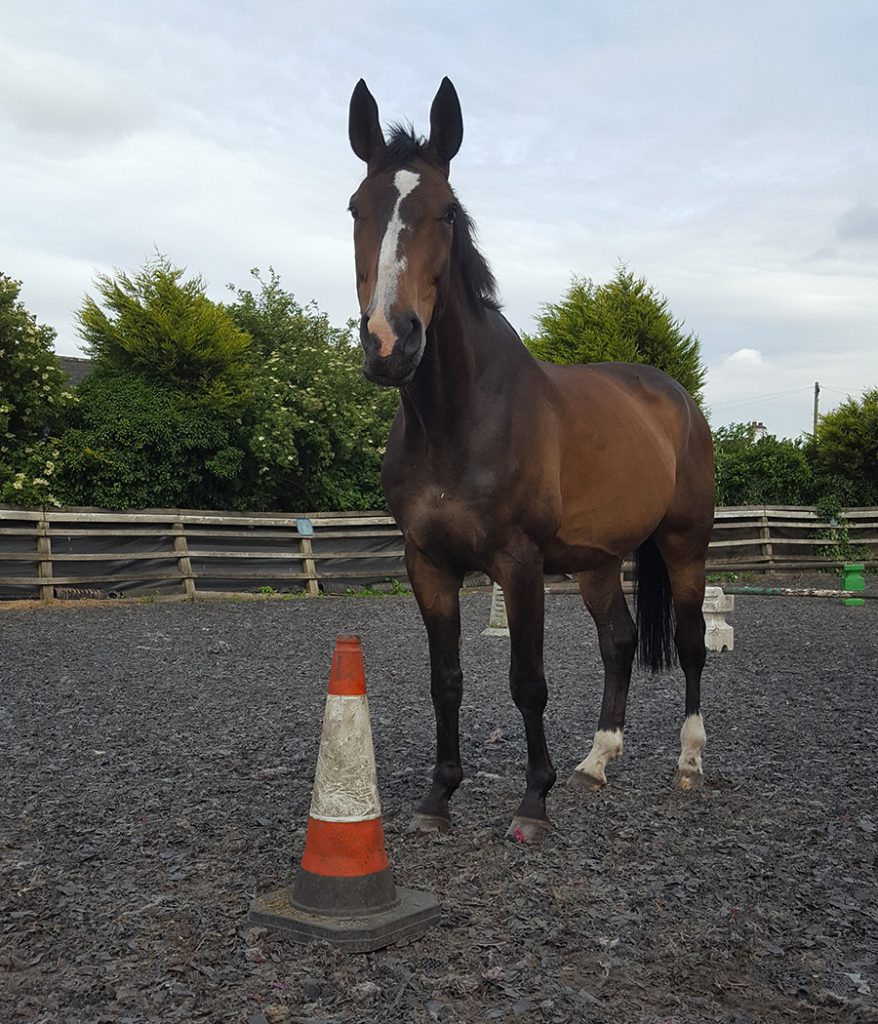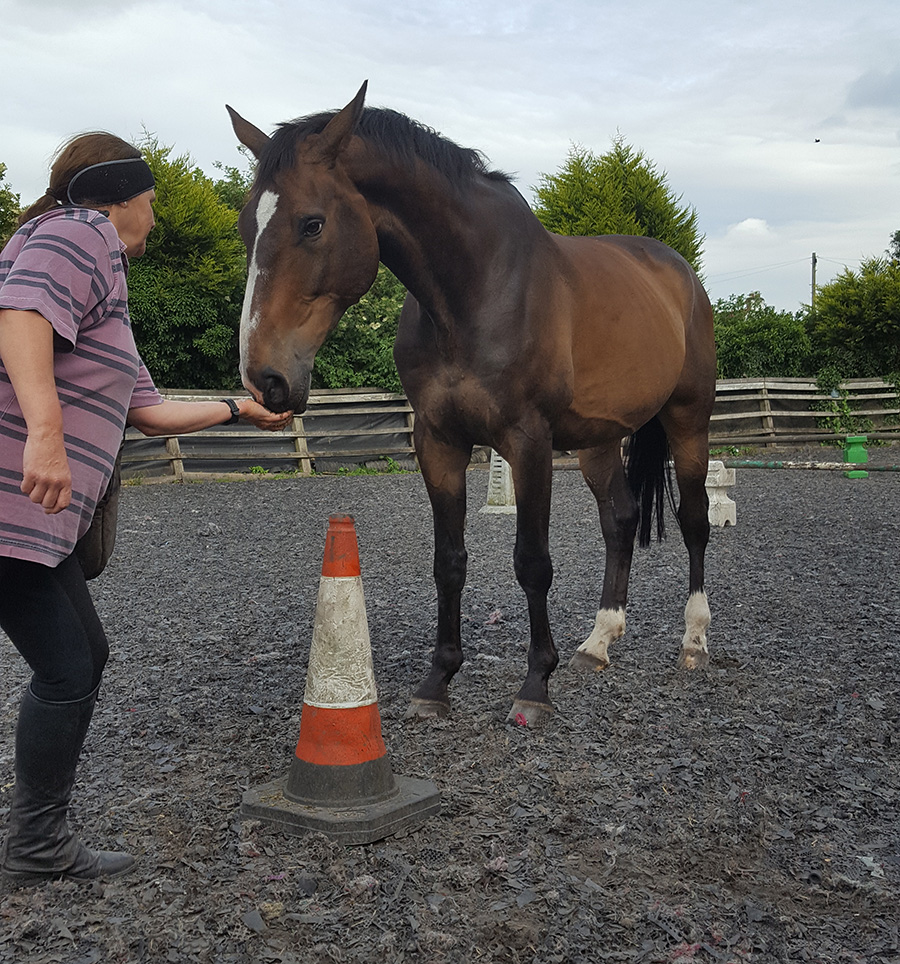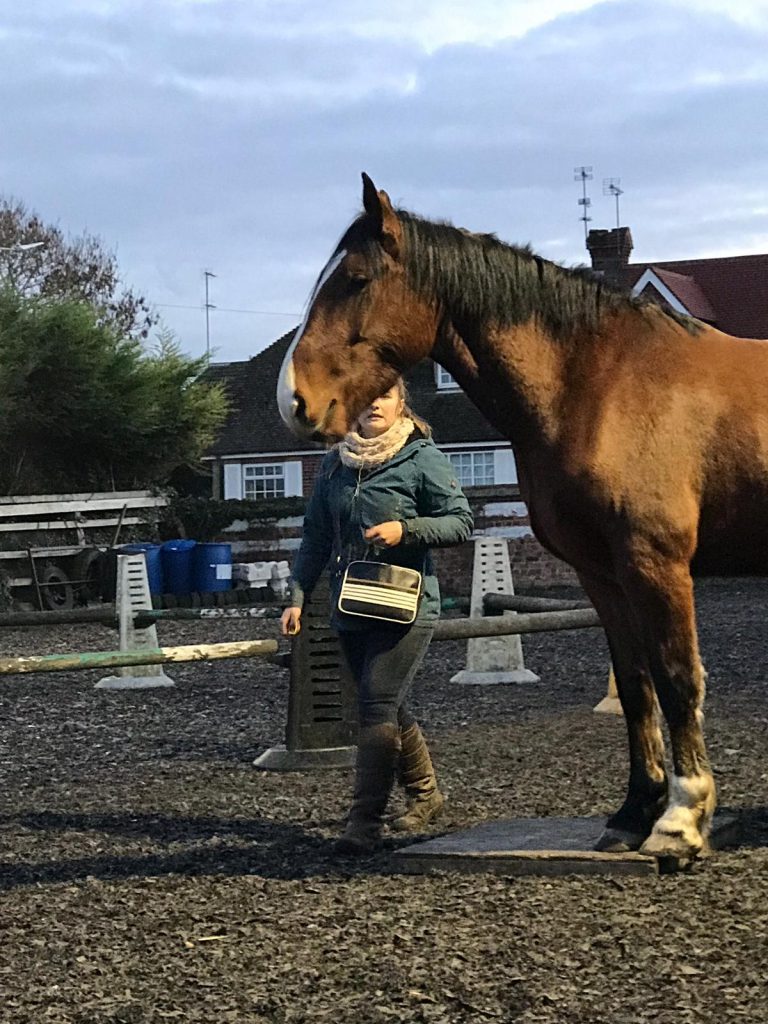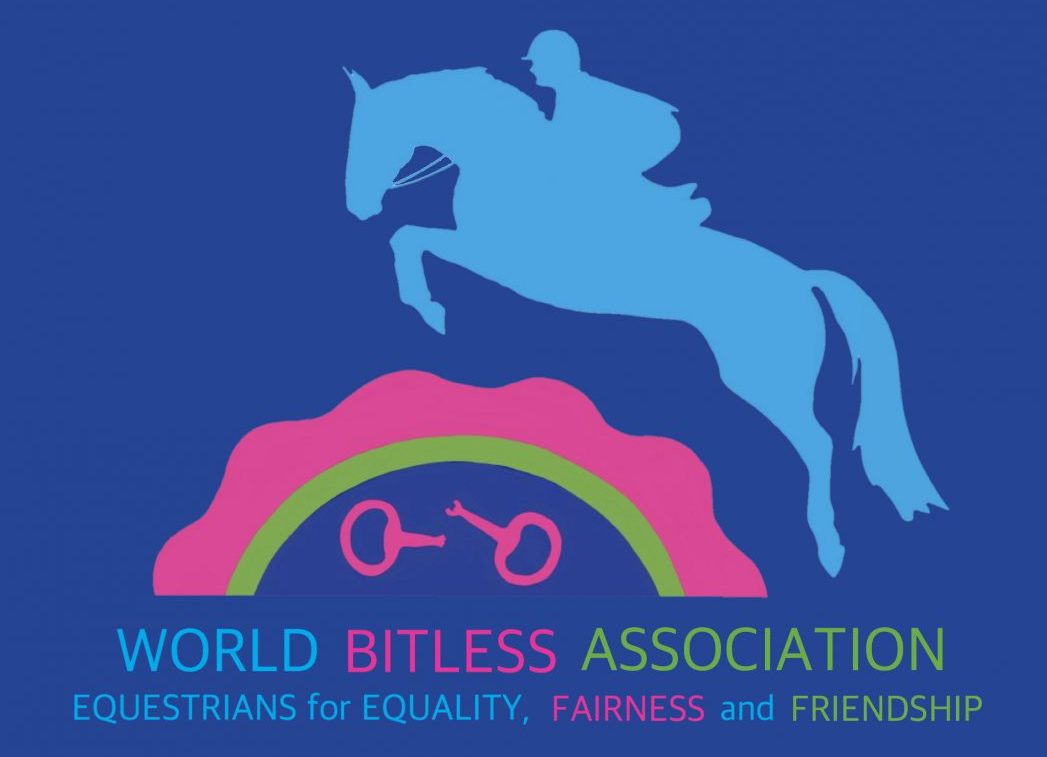
Clicker training is a marker training protocol based on proven science and is evidence based. The click, whistle (or any bespoke noise), is paired up with a reinforcer. Something which is of high value to the horse. This bespoke noise is called the bridge signal. It bridges the desired behaviour or emotion with a reinforce. In the case of a horse it could be scratches or food. When the bespoke noise is made, the horse learns to work out exactly what it has just done which will then illicit the treat. Any behaviour shaped with a high value reinforcer is highly likely to be repeated. Therefore, a money bonus at work- especially an unexpected one, is very likely to feel great and shape you to keep up the good work you are doing!
Positive reinforcement has been used in Marine mammal training for decades. It is the basis of all good zoo training across all species for cooperative care. The zoo animal is free to leave at any time and is rewarded for staying and allowing certain veterinary and husbandry procedures to occur. The dog training world adopted this practice years ago too- us horsey folks are just slow off the mark!
How does clicker training work with horses?
Any animal can be clicker trained so horses are no different.
Clicker/marker training uses the positive reinforcement (R+) part of something called the Operant Quadrant- where you add something of high value to reward a behaviour. Operant conditioning (the work of B F SKINNER ) are all the choices we have to use in order to shape future behaviour. All 4 parts are effective training choices but the 3 below risk potential emotional fallout which destroy or erode trust or cause actual fear.
(a) Pressure on, pressure off is Negative reinforcement (R-), where the horse learns how to stop you doing something it does like and finds aversive, annoying or irritating.
(b) With-holding something the horse values is Negative Punishment (P-), where the horse feels punished by your action but there is no touch involved.
(c) Striking, hitting, feel a whip, spurs, harsh hands on a bit etc all fall into Positive Punishment (P+), where you add something which feels painful and punishing to the horse.
All these choices are the life and experiences we bring to the table when we are training, interacting with and caring for our horses in their daily management. Using clicker training with horses creates a wonderful way to communicate and brings positive associations to his world he shares with you.
Clicker training works by shaping behaviour in tiny increments, each one being marked and reinforced. The horse learns what he got clicked for so will want to repeat that behaviour because it gets paid! As the confidence and understanding grows, so you start to stretch the training more- so we get more for our money and the horse develops complete established end game behaviour as a result. It requires problem solving on the horses part which means that real cognitive processing is happening- a trainable brain!
Can anyone clicker train their horse?
If you decide to become a positive partner by using R+ (adding positive reinforcement) then there are new skills to be learnt. Shaping any future behaviour means we need to break it down into many tiny parts: – which progressively develop into the whole end game behaviour desired. The skill is to set the horse up to succeed, give him choice, let him experiment to find out exactly what he got clicked for and then to gradually build it up. These tiny steps are called approximations. The more small slices you can create during training, the easier it is for the horse to learn what we are wanting in actions. This process is called behaviour Shaping. It is both us and the horse who need to learn to problem solve therefore careful thought must be used as to how best plan the training from start to finish.
There is a word of warning here as you must be very mindful of what you click and when. It is possible to attach the wrong actions or emotions very quickly. The art of this training needs help with from a professional or a very good online course.
First and foremost is the default behaviour of head straight and not mugging which must be trained right from the beginning. People go so very wrong with clicker training horses if the foundations are not correctly established. There are possible pitfalls if you do this wrongly. Horses can get over excited (arousal) so care must be taken to ensure that each stage of training is introduced properly and with thought. You can observe calm behaviour and click them. Have calm and relaxed as your base at all times. Once calmness, head straight, no mugging and no over arousal is in place we then move the training on to the next stage. Target training.

………………………………………………………………………………………………………
What is target training horses?
Target training is when the horse touches a part of his body to your hand or to an object. Usually started with nose targetting, the horse touches his nose on an object you hold where you click the very second he touches and then reinforce with food. You can eventually teach him to follow a target for things like leading training or loading into a horse box. We teach foot targetting so that horses lift their own feet up for care procedures on cue. We teach hip targetting so that horses line themselves up at the mounting block. We teach recall to a hand target so that catching in the field is easy and the horse comes to a call cue with enthusiasm. These are just a few applications of the training – there is a whole massive world of training applications to bring to your table if you decide to learn the art of training using behavioural science.
……………………………………………………………………………………………………
Rememberone really important rule which isthat every behaviour has a function to the horse. Thesebehaviours can be observed and described in detail. They may be fear based, where the horse is avoiding something or somewhere (avoidance behaviours). They may be fear based, where the horse needs to leave somewhere he feels unsafe. (escape behaviours) They may be driven by separation anxiety from their bonded horses. Your horse may be in pain! He may be behaving in ways against your wish list because he simply just cannot do your bidding. Obviously none of the above are good scenarios so look into how you can help your horse feel safe, be pain free and find calmness instead.
Don’t use labels! Labelling your horse with words like stupid, awkward, lazy, fizzy, arrogant, being a bitch, crazy, etc. None of these are helpful. Try instead to look at exactly what is happening and find out what the horse is trying to gain by the behaviours. Forcing horses into a place he feels emotionally compromised is only ever going to be destructive. Horses do not lie! They tell the truth and their behaviours reflect that truth.
I am an Equine Behaviour Specialist. I understand why horses do what they do and why. I can be reached for behaviour consultations and training plans via my website www.instinctivehorsetraining.co.uk or via my social media page www.facebook.com/instinctivehorsetraining.

